Problems With Your Automatic Watch? What’s The Cause And How To Solve It?
If you are unlucky, you might encounter some problems with your automatic or mechanical watches.
Depending on the severity, the steps to correct it will differ. Some of them can be severe that require a full service while some of the minor problems can be resolved by yourselves.
Here, I’ve listed some of the common problems with automatic watches, what causes these problems and how to solve them.
Table of Content (Click the subtitle to go directly to the section):
- Automatic Watch Stopped Working While Wearing It
- Automatic Watch Stopped Working After Taking It Off / Power Reserve Problem
- Automatic Watch Stopped Working After Dropping It
- Automatic Watch Running Slow Or Fast
- Fogging Inside Watch
- Minute Hand And Second Hand Not Perfectly Aligned
- Automatic Watch Not Winding
- Date/Day Display Don’t Change At The Right Time
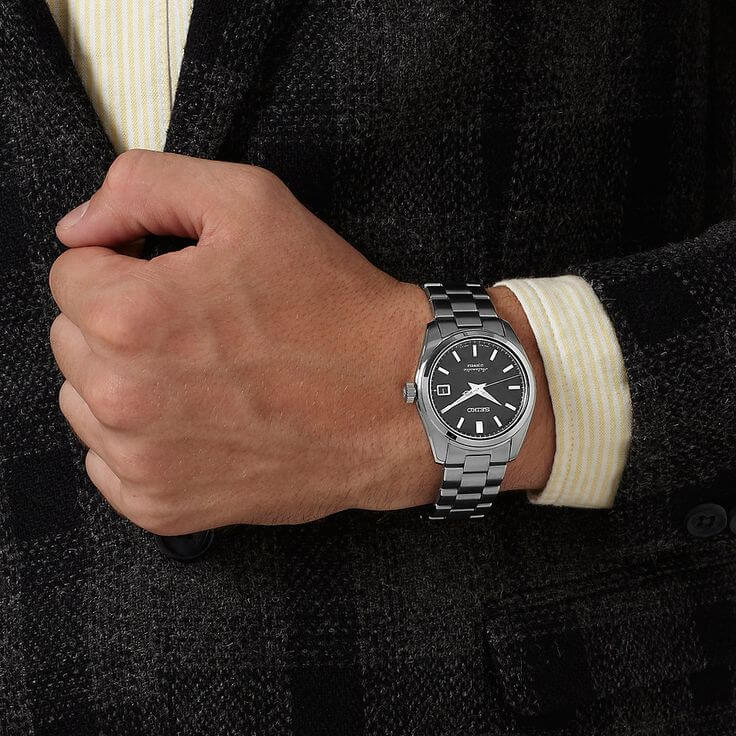
As great as they are, automatic watches are not free of problems. By having some knowledge about what we should and shouldn’t do to it, we will be able to avoid costly repairs. (shown above is the gorgeous Seiko SARB033)
1- Automatic Watch Stopped Working While Wearing It
Ever having problem with your watch stopped working while wearing it? If its a quartz watch then most probably the battery is dead but automatic watches don’t have any battery and supposed to be powered by your movement right?
Well you are correct but there are some reasons why a watch can go dead. There are 3 common causes of why an automatic watch can stop working:
Cause 1 – Not Enough Power Reserve
Something that most people don’t know it the watch might not have enough power reserve even though you are wearing it regularly.
But aren’t automatic watches are recharged by wrist movement?
The reason is because you are not active enough to wind the mainspring fully.
Try this: take a watch with an exhibition caseback and shake it to see whether the self-winding rotor rotates or not. It is easy for the rotor to moves?
Some watches can have a very smooth rotor that rotates lively even with a slight movement. But some watches have rotor that requires more effort for it to rotate.
Due to this, just wearing your automatic watch to office might not be enough to wind it fully. Consider wearing your watch when you are jogging, swimming or going to gym (if your watch is a sports watch.
Don’t do this with a dress watch though. You don’t want to scratch that pretty thing lol).
Another method that I like and personally use is to manually wind your watch once a while. This will make sure the watch has full power reserve as just wearing it might not be able to recharge it fully.
Just be careful to not over-wind it or wind it too often as you might break the delicate parts inside.
A video showing how to wind an automatic watch. Shown in the video is the gorgeous Rolex Submariner
Cause 2 – Magnetic fields
Exposing your watch to strong magnets such as in speakers, fridges, etc will magnetized the steels inside your watch.
The result?
The small steel components inside your watch will tend to stick to each other or repelling each other (depending on the pole) and reducing accuracy of the watch (the watch will run slower or faster).
But for extreme case of magnetization, the watch will completely stop. Bring you watch to a watch maker to check for magnetization and then demagnetize the watch.
Cause 3 – Serious Problems With The Movement
If your watch still stops even though you wind it everyday and no magnetization is known, then there could be a serious issue with your watch’s movement. Bring the watch to a watch maker and let him check the watch for any problem and servicing.
If the watch is still under warranty, you can bring it to the seller for inspection or replacement. Bear in mind that full servicing can cost some money depending on the watch make and severity.
Popular and affordable movements such as Swatch ETA, Seiko and Orient movements are easier to be serviced by just about any competent watchmaker. Costs of parts are also cheaper for these.
But if you have a unique in-house movement by luxury or independent brands, then the official service center is the most recommended avenue. I certainly won’t trust my $10k Rolex on any normal watch shop…. you get what I mean right? =P
(Read also the 10 Best Affordable Automatic Watches Under $200 – who said that automatic watches need to be expensive?)
2- Automatic Watch Stopped Working After Taking It Off / Power Reserve Problem
You wear your watch for some time, then put it off and when you want to wear it back, it is dead? How could this happen?
The reasons for this to happen are exactly the same as the first problem above i.e lack of power reserve (you can refer above for its causes and solutions). Another thing to note is the power reserve of you watch.
If you are paranoid about your watch’s power reserve, then get one with a power reserve indicator like this Orient Star Retrograde. As you can see, the top subdial displays its remaining power reserve which is really handy
Even though your watch’s movement might have 40 or 50 hours of power reserve, the watch might stop working even before that.
Why is this so?
One thing that we need to know is the power reserve of any automatic is the time for the watch to stop working after it’s been recharged to full capacity.
As I’ve stated above, usually, wearing it for a day (normal 10 to 12 hours on the wrist) will not be enough to charge the watch to full.
Not to mention most watches don’t have power reserve indicator which can be a huge help in telling the power reserve capacity at any moment.
In fact, most experience owners state that the remaining power reserve of the watch is about 2 or 3 times the last duration we wear it.
So for example, if I’m wearing my watch for 12 working hours today, it will tick for 24 to 36 hours after I put it down.
What should we do then?
For me, I’ve always manual/hand-wind my auto watches before I use them. A few turns (15-20) is enough to start the movement and then I just wear it.
The key is to NOT only depend on the self-winding of the movement. As mentioned above, the rotor movement might not be sufficient especially if you’re working a desk job without many wrist movements.
In addition, this will keep the accuracy high as the watch has more juice in it.
What if I’ve tried that but it didn’t work!
Then there could be a bigger problem in the watch. Try to handwind it for 40-50 crown rotations and lay the watch down. This will make the mainspring full of power reserve.
Keep record of what elapsed hour the watch stops. If it’s less than the published power reserve for that movement, there could be a problem with the movement itself.
At this point, we should bring it to a watchmaker for him to have a look at it. Depending on the case, we might only need a servicing, cleaning, or a change of the mainspring.
By the way, it might also be a good idea to invest in a watch winder which is a great alternative for those that don’t want to have to reset or handwind their watches before they use it.
The watch winder functions by rotating the watch via a motor. Just place the watch inside the winder’s slot and plug it in.
It will then rotate the watch, and the self-winding rotor inside it to charge the power reserve.
The watch winder is a great way to ensure the power reserve is still full without us having to do anything. It also prevent from issues due to winding (which can happen to some ETA movements).
By the way, did I mention the watch winders can also be a nice storage box for your watches? =)
I like to also add that the Sistem51 movement by Swatch boasts a 90 hours power reserve. For those that don’t want to spend on a winder or just want a watch with great power reserve, you might want to check the Sistem51 watches.
3- Automatic Watch Stopped Working After Dropping It
This cause is easier to understand. You drop the watch, it get into a sudden impact and suddenly it goes dead. Well chances are your watch might have some internal damage in it.
The inside of an automatic or mechanical watch is made of hundreds of parts that work seamlessly to run the watch. These parts can be as small as 1 mm in thickness or diameter. Any sudden impact could put these parts out of place or worse, even break them.
The part that are more prone to impact damage is the balance wheel. The pivot/staff of the wheel balance is a very critical part because it holds the weight of the balance wheel which is continuously moving at a high speed.
This Seiko SARB017 (or Alpinist) has a built in shock resistance system developed by Seiko – i.e Diashock – to protect its balance wheel jewel from severe impact damage. All good outdoor or diver’s watches should always have this to protect it from costly repairs
Most damages due to impact is because of broken wheel balance pivot and/or its jewel.
If your watch stopped working after dropping it, try hear if there is any sound in the watch to know whether your balance wheel is functioning or not.
If your watch has exhibition caseback, you can just confirm this by looking directly at the balance wheel to spot anything wrong with it. The only solution is to bring the watch to a watch maker for a repair.
Some shock protection system has been designed to protect automatic/mechanical watches from impact damage, specifically the jewel.
Incabloc (from Swiss), Diashock (Seiko) and Parashock (Citizen) are some of the shock protection systems that have been devised by watch companies. All of them have some sort of spring at the jewel pivot of the balance wheel to protect it from impact force.
If you are a rough person that tends to get his watches damaged this way, you might wanna check out those watches with a shock protection system in them.
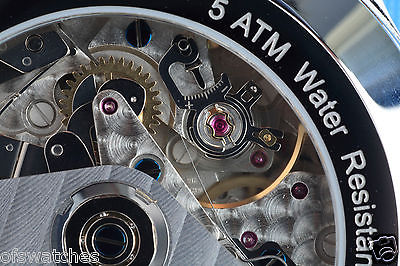
Balance wheel is the part inside an automatic watch which is most prone to impact damage
4- Automatic Watch Running Slow Or Fast
Automatic and mechanical watches will always run slow or fast after some time. The most accurate watches are the COSC certified chronometers that can have a -4 or +6 seconds per day accuracy.
Other watches can have a lesser accuracy than this and you have to check the official numbers by your watch manufacturer. But generally the accuracy values is within +/-25 seconds a day for a low end range of automatic watches.
If your watch have a lesser accuracy than this then this indicates a problem with your watch. There are 5 reasons why automatic watches will run slower or faster than acceptable accuracy:
Cause 1 – Not Enough Power Reserve
Accuracy of a movement is tracked at maximum power reserve, after a watch has been fully wound. If a watch is not fully wound (or power starved), then the accuracy will be slightly lesser than what your watch manufacturer advertised.
Try to at least wind it once a while for it to have a full power reserve. You will notice a difference with the accuracy compared to when the watch just relied on wrist movement.
Cause 2 – Temperature
Another important thing that most people don’t know is that your watch have different accuracy in different temperatures.
Too hot (more than 38 degrees Celsius) or too cold (less than 15 degrees Celsius) will affect the metal parts inside the watch. Steel will expand at high temperature while contracting when it’s too cold. Coldness can also affect the lubricants inside the watch.
Most of the times it’s the coldness that affect the accuracy since it will take a very high temperature to make a difference – not all of us live in scorching hot desert.
But coldness especially during winter can change how the watch behave. It will run slower a bit if exposed to cold weather and might have shorten power reserve. But the effect of coldness will not be apparent if you are wearing the watch though as our body temperature will heat the watch up.
Cause 3 – Position
Watch movements accuracy is highly affected by the balance wheel and escapement. These systems can be affected by the position of the watch due to gravity. Examples of watch positions is flat with dial/watch face looking up, dial down, vertical positions with different locations of crown.
As you can suggest, the dial up or down is basically when you put the watch on a table/closet after wearing it during the day. The vertical positions are during wearing the watch.
During each of these positions, the effect of gravity will cause the balance wheel to have a slight change in movement causing some inconsistency. Most watches are most accurate at one or two of these positions.
When you put the watch at other positions, the accuracy will suffer. This is the main reason why chronometer is highly sought after – they are designed and adjusted to be accurate for all positions.
My suggestion is to keep track of what position your watch is most accurate and what position it isn’t. You can use apps to help with this. Just search for watch accuracy in appstore/playstore.
Normally these apps will have you set the watch to accurate time in the beginning and then you can record the time at intervals and it will report the accuracy in seconds per day. By doing this, you will know what position your watch is most accurate and use it consciously.
Cause 4 – Magnetism
As stated above, magnetism of watch can greatly reduce accuracy. It’s highly recommended to avoid placing your watch next to any digital or electronic devices to avoid magnetism.
Case 5 – Due For Service
Just like a car, automatic and mechanical watches also need to be serviced after some time based on manufacturer’s recommendation. This is one of the biggest flaw of automatic watches versus quartz watches.
Because of the high number of moving parts inside it, automatic watches need to be serviced to keep the movement well oiled and also to adjust the balance wheel and escapement. Generally, 3 to 5 years are the normal service interval. Don’t skip this if you want to keep that watch as heirloom for your grandson =)
(Read also the 30 Best Automatic Watches Under $1,000)
5- Fogging Inside Watch
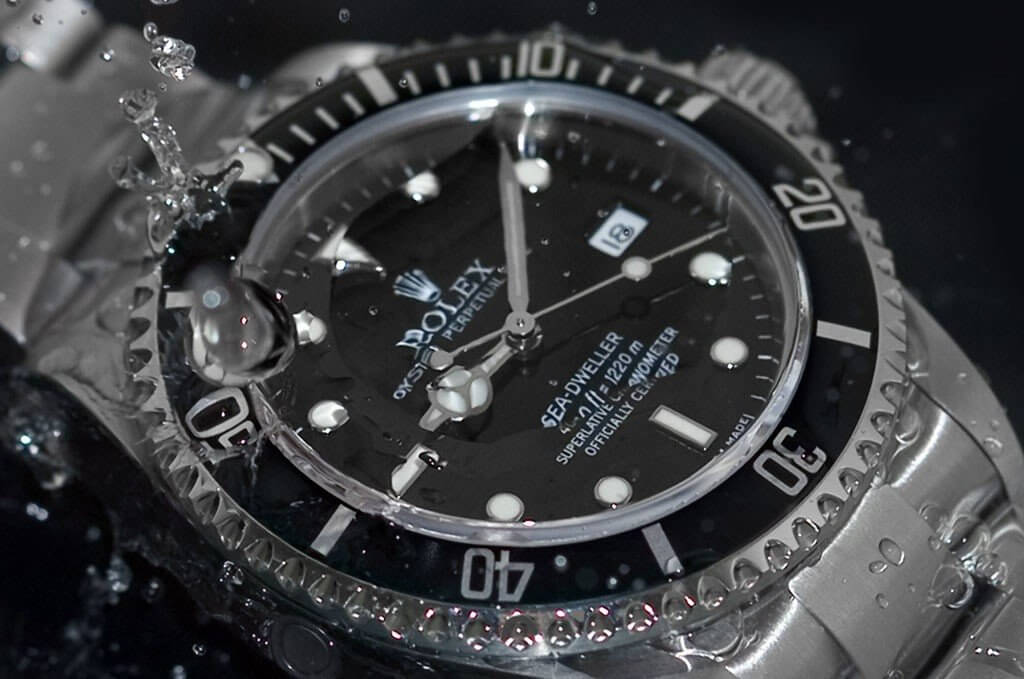
Some watches especially dive watches has screw down crown for added protection. The dial window and caseback is easily guarded from water ingress by gasket and seals.
Since the crown is used for manual winding and setting the time, it has a staff that is connected to the movement inside the watch. The small gap between the staff and the casing is the perfect place where water can get in.
Screw down crown solves this problem by screwing the crown into the case, and eliminating any possible gaps between them.
Shown above is the Seiko SKX009 with its crown unscrewed. Remember that screw down crowns MUST ALWAYS be screwed properly at all times even when storing the watch – except when using the crown of course.
But it has to be reminded that the screw down crown must always be screwed in tightly when you are using the watch for any activity especially swimming or diving. The crown must not be operated while underwater for, well.. the reason is obvious right.
It is also recommended to get your dive watch to be tested for water resistance after a few years. It is worried that the gasket and seals of the watch has already worn out.
If you are a serious diver, then it is very important to ensure your watch is always in perfect water resistance condition to avoid any unwanted problems.
6- Minute Hand And Second Hand Not Perfectly Aligned
A common issue with automatic watches is the minute hand and second hand are not perfectly aligned.
For example, when the second hand is at the 12 o’clock position, the minute hand is not perfectly on top of any minute marker.
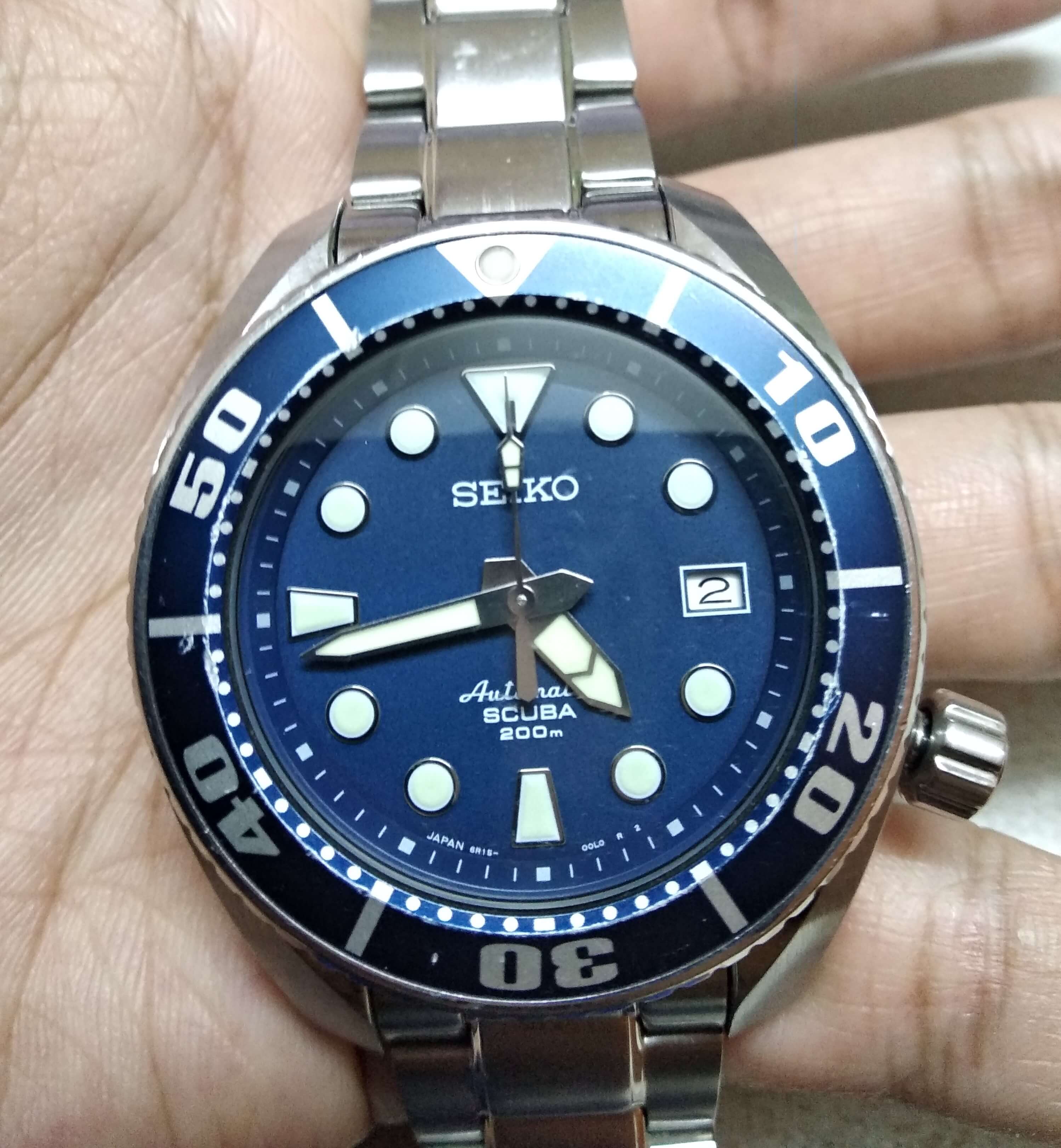
An example of how not setting the time correctly can cause the minute hand not sitting directly on the minute marker when the second hand is at 12 o’clock. By the way, there’s no problem with the watch and this can be fixed easily.
This is caused by improper setting of the time when first bringing the watch from stop.
To be honest, this does not mean there’s any problem with the watch. The watch is running fine but to people with a keen eye for detail, this is not acceptable.
Personally, I also don’t like this, but not because it doesn’t look nice. For me, a watch need to be easy to tell and having a non-perfectly aligned minute hand makes the time telling unusual and weird.
So what do I do to avoid this problem?
I’ll stop the second hand exactly at the 12 o’clock position and then move the minute hand to be perfectly on top of the minute marker.
While this is easy to do with a hacking movement, it’s a bit more difficult with a non-hacking movement (such as the 7S26 inside Seiko’s SKX watches).
For those movements, we need to be more precise as the second hand does not stop. So the moving of the minute hand need to be on-point when the second hand passes the 12 o’clock.
7- Automatic Watch Not Winding
If you feel there’s a problem with the hand-winding function, try to let the watch stop on its own.
Then pick it up and give it some hand-winding. The watch should start after a few turn of winding the crown. If it isn’t, this means there’s a problem with the movement and a visit to your watchmaker is need to resolve it.
8- Date/Day Display Don’t Change At The Right Time
A common issue that I’ve personally faced is the date and day indicator don’t change correctly.
I’m sure those using analog watches with either one of this feature will experience the date/day suddenly change around noon.
The only reason for this is incorrect setting of the day/date.
We need to remember that automatic watch is not like an electronic watch. It does not know the current time (i.e am or pm). Which is why the day/date will simply change once the hour hand completes 2 rotations (or 24 hours).
So what’s the correct way of setting the day and date display?
Below is the step by step guide on how I change my date/day display on my watches:
- When first picking up the watch, move the time until the hour hand is at 12:00. See if the day/date change or not.
- If the day/date change – means the watch just enters AM mode
- If the day/date does not change – means the watch just enters PM mode
- From there, you can set the time according to your current time.
- For example: if you move the hour hand to 12:00 > day/date change means the watch just enters AM mode > but you’re in the afternoon > move the hour hand a full rotation (12 hours) to enter PM mode > then set time and day/date.
[UPDATE]
Currently I don’t use the method above when setting my watches and prefer another method. Below are the steps of this method:
- Change the date and day to ONE day before the current day. E.g if today is May 15 Sunday, then we need to change the date to 14 and the day to Saturday.
- Move the time needle to 12:00 and notice the change in date/day window.
- If there is no change, that means the watch’s internal time is in PM mode. Another rotation of the watch will change it into AM time of the current day. We can adjust accordingly from here.
- If the day/date change, it means the watch just enter today’s time in AM mode. Again, we need to adjust the watch accordingly.
Watch the video about for the summary of the common problems with automatic watch
End Thoughts
Automatic/mechanical watches are a delicate piece of engineering and should always be treated delicately. Not to mention they cost way more than normal quartz watches. So I’d put them as the fancy sports car – expensive but have to be properly taken care off lol!
Thus, it is important for all automatic watch owners to know what can be done and what cannot be done to prevent from any unwanted and costly problems to their prized watches.
Do let me know if you need any assistance with the problems above. I’ll try my best to help you out.
I hope that you guys will find this post beneficial to you. Let me know if you have any comments or thoughts on this matter.
Don’t forget to share this article if you like it =)
Till next time. Cheers!
Isaac

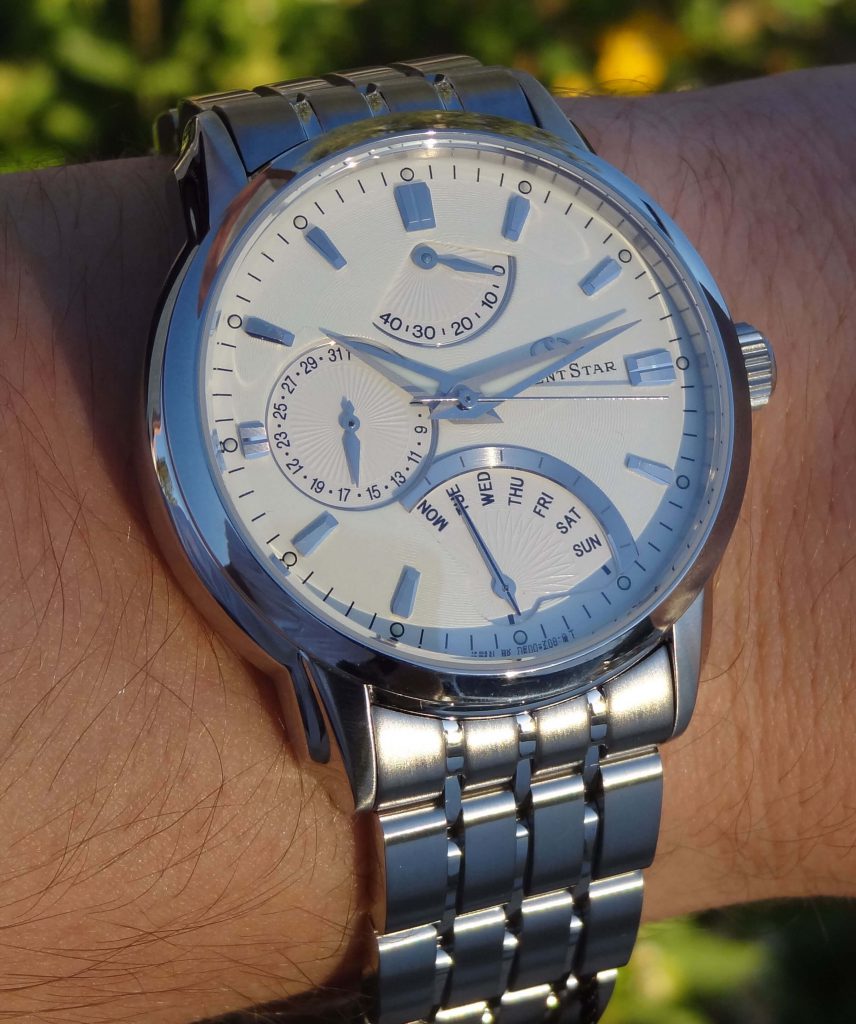


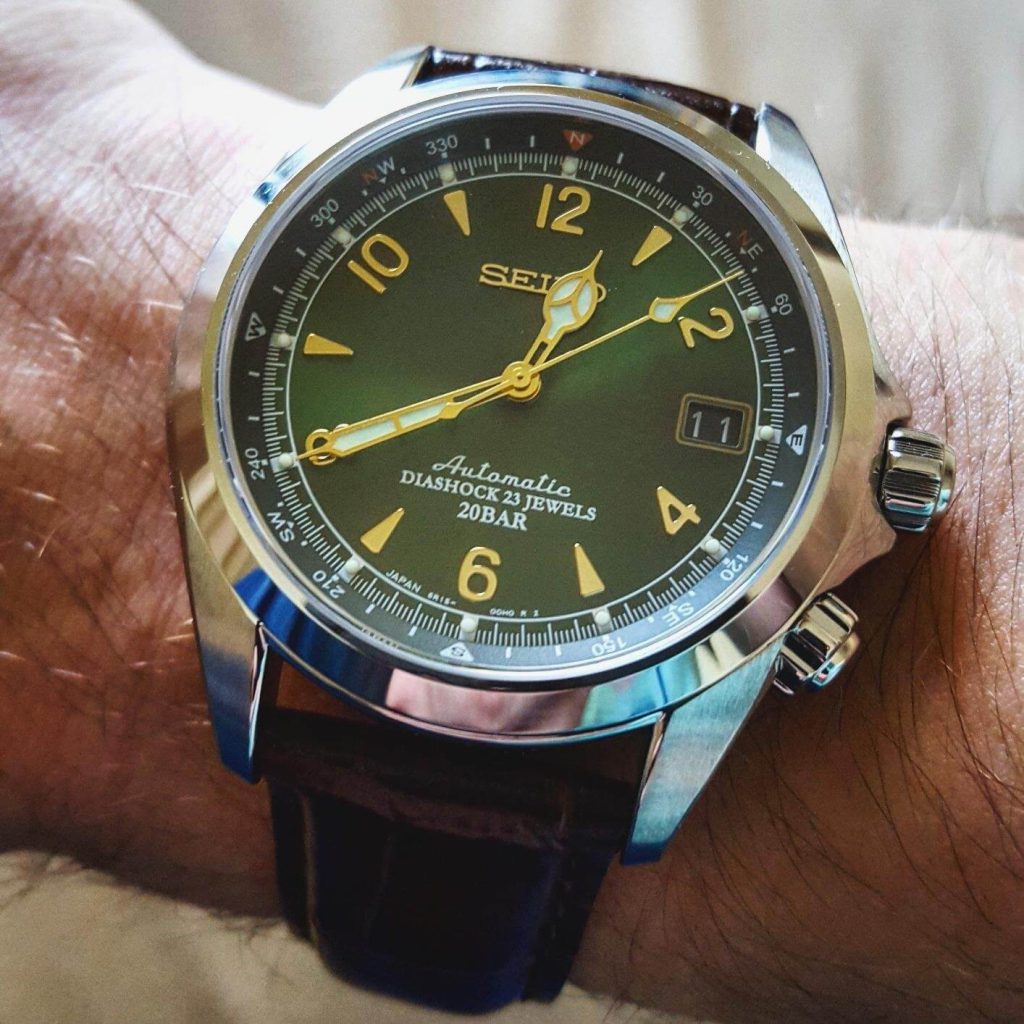
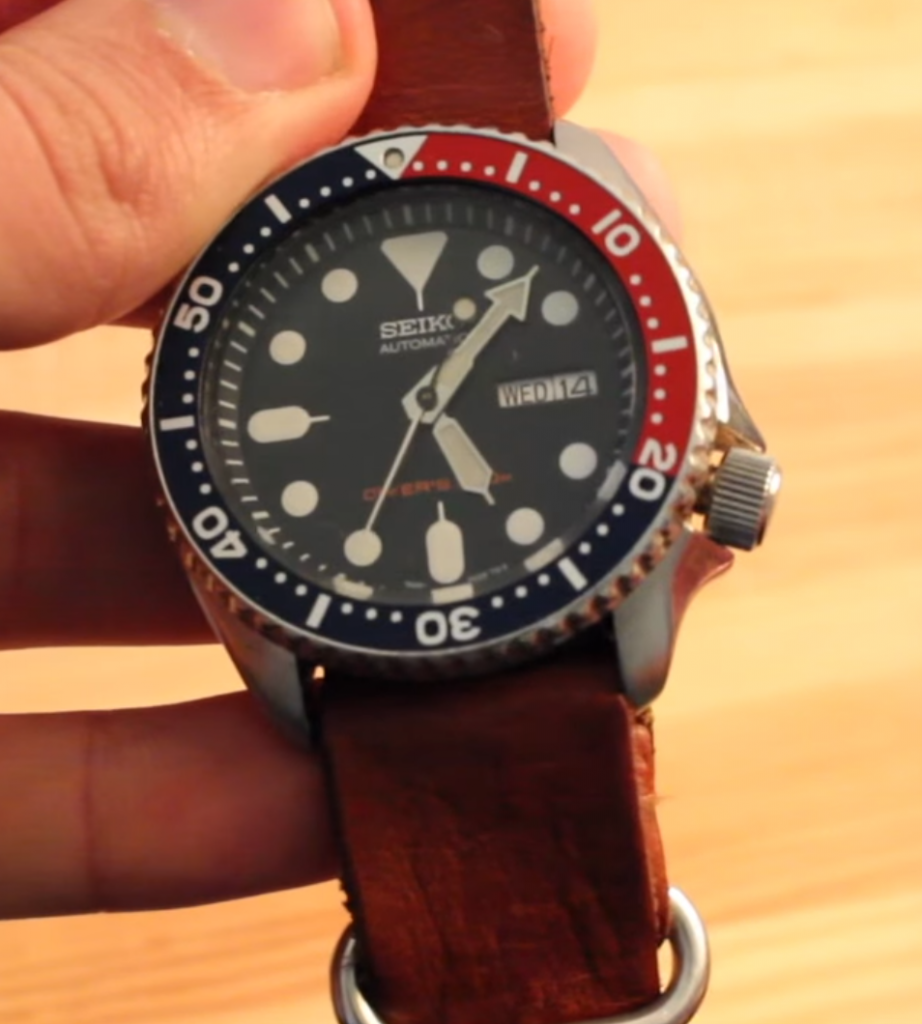
hi
one morning i reset my watch in sync with my phone, and after about 20 minutes it lost about 15 seconds, so i then re synced it with the phone only to find it once again lose 15 seconds within 20 minutes, so i then wound my automatic and after 2 days it has been keeping great time. Any ideas what happened here?
thank you
Steven
Hi Steven. What you just described is the advantage of manual winding automatic watches. What I found with the watch’s accuracy is it will be most accurate when the watch is fully wind i.e. it has near full power reserve. At this point, the tension in the mainspring is the highest and this condition is what most watchmakers used for accuracy adjustments. Thus if your watch’s power reserve is low, the accuracy will be lower as compared to when it has full power reserve. Cheers
Hi
A family member has given me a automatic Longines ladies watch , i know it has not been used for well over a year and i cant get it working , i have worn it for a couple of hours , tried winding in position 0 , 1 seems to be to change date and 2 to change time , the bit in back does move when watch moved but it doesnt run , is there anything i can try before taking it to repair , i have not tried excesive winding because i dont want to cause more damage if it is broken. TIA
Hi Joanna. If what you mean by the “bit in back” is the balance wheel and the other gears, then I’m afraid something might get stuck in the watch causing it to not functioning. Of course this is assuming that you’ve wind the watch correctly. However since you’ve worn it for a couple of hours, any new automatic watches should just start.. I’m afraid the best course of action would be to bring it to a watchmaker and get the watch checked. Cheers
I’ll be honest, I have found this article to be very useful. I have just purchased a Citizen automatic watch, which is a refurbished model. It has an original movement, with a new case, dial, crown and caseback. The day and date have been acting up, so I have followed your advice, and hope that it fixes the problem. I will be honest, this is why for most purpases, a good Quartz watch is trouble free.
Hi Nicholls. I’m glad that my post helped you. Yes indeed, quartz is definitely a technically better watch thanks to high accuracy. It’s also cheap and won’t ever have any problem, provided we take good care of it. But still, I personally believe automatic watch is more unique due to its characteristics that none other watch types have =)
Hi Isaac,
Thanks for you website.
I purchased an Oris ProPilot Day Date in December 2017 and now the automatic winding mechanism is making a noise whenever I shake it.
The watches automatic mechanism also makes a barely imperceptibly more noise during normal wearing. It still keeps good time but I am afraid something is loose. I had an Omega Speedmaster which worked faultlessly for almost 10 years yet the Oris is just over two years old. Oris want to charge me as it is just outside warranty. My Seiko Sports 100, although quartz, is still going strong after 40 years. Although I love the watch’s look I have lost confidence in the Oris brand. Your thoughts would be appreciated.
Regards,
Michael
Hi Michael,
It’s unfortunate that you got a less than perfect watch. Don’t despair though as this can happen to anybody. Heck, we even heard about those buying Rolex that turned out to be a lemon – despite spending thousands of dollars on it and Rolex having one of the best brand name in horology. So it’s never a fault of your own.
But if you’re asking me about what I would do, there 3 possible steps that you can take:
1) You can send the watch to a local watchmaker and had him open up the watch to see what’s it’s all about. You can also send it to Oris but it will take longer time and since it’s out of warranty anyways so why bother. If there’s actually no problem with your watch, then problem solved! You just need to live with the small noise as that could be the distinctive property of your automatic watch. However, if there’s a problem with the watch, you can ask your watchmaker on what’s the repair bill going to be. The decision to repair it will ultimately depend on your personal finance situation at that time.
2) Alternatively, you can also just sell off the watch hoping to get most of your money back, and then use the money to buy another watch on your wish list. It might sound ridiculous to sell a watch just because of some noise but I believe if you’re not happy with the watch, then why bother to keep it right? However, only sell it if you don’t want to bother repairing it (see 1 above) and you already has another watch that you want to get your hands on.
3) Lastly, do nothing and wear your Oris less often. For instance, I’ve had one of my earlier Seiko 5 getting very inaccurate to the tune of +1min/day (partly my fault as I was using it for all sorts of outdoor activities…). I didn’t bother sending it to the watchmaker as 1) the watch is still ticking and 2) the repair bill will be a substantial percentage of what’s the watch is worth. So I just wear it about once a month as I do still enjoy wearing it (it has a lovely world map dial on it).
Hi,
I own a TAG automatic watch which has been faultless for 3 years of ownership and only required winding once a week as I am active & workIng for a living.
Recently however it has began loosing time after 3/4 days, as much as 15-20mins, and I have been forced to reset time & rewind again 40+ times.
Is there a fault or am I being over sensitive ?
Many thanks,
Andy
Hi Andy. Without a doubt, something is wrong with your watch. I did experienced losing accuracy with one of my watches (around 3-4 minutes per week, definitely out of spec) and a visit to my local watchmaker for service and adjustment fixed that. Now, 15-20 mins in just a short span of 3/4 days means the TAG Heuer’s accuracy is somewhat 4-5 mins/day! I’d say to bring it over for service and adjustment (as it’s been 3 years so it’s definitely a good idea to just service it at this time). Hope this helps. Let me know if you need further info.
My selfwind Seiko 5 watch stops when the day& date are about to change( in between 10.30 pm&1.10 a.m). It works normally,if the time is changed manually by moving the hour& minute hands(shifting from 1.10 a.m).Why this happens?What is the reason?Due to the friction of the day& date discs?How to rectify?Please enlighten me.Thanking you in advance,
R.G.Krishnan.
Chennai( India),
17.11.19.
Hi Gopalakrishnan. It would seem that your Seiko 5 has a damage or some sorts if it suddenly stopped when the day/date changes. I have few Seikos (selfwind and automatic) and this is definitely not normal. I’d advise that you claim warranty or replacement from the seller. Or in the unfortunate case that your warranty already expires or you don’t have one, you can send the watch to a watchmaker for him to have a look.
Since a Seiko 5 is a common movement with parts relatively cheap, I don’t think the repair bill will be very expensive. Do let us know how it turns out buddy.
Hello. What could be wrong with a watch if it often stops between 8pm and 12am? That is, when the time is near the date change.
Thank you.
Hi Dave. The problem that you have here is quite unique. Do you wear the watch daily for 8-10 hours? If you do, then the watch should not stop at 8 pm which is still too soon (assuming you got back at home at 6pm and take off the watch then). I’d advise to bring the watch to a watchmaker and have him check if there’s any damage inside the movement.
First of all, thank you for your excellent reviews.
Last month I purchased a Hamilton Jazzmaster Spirit of Liberty and during the first 30 days, it was spot-on accurate, however now it’s losing a minute per day.
Any suggestions before I send it back?
Hi Roberto. You’re definitely onto something here as a new automatic watch should not be that off so soon after purchase. I’d first try to wind the watch and see if there’s any difference in accuracy.
If the accuracy is still off, then I’d try to think of any changes or what happened to the watch in the past 30 days:
1- Have you dropped it hard on the floor?
2- Did you used it for any physical activities e.g gym, swimming, jogging etc.?
3- Any wild temperature changes right now compared to when you first bought it?
4- Any exposure to strong magnetic field?
If you answer yes to all the above, there’s a good chance the watch’s internal movement was compromised. But even if you can’t think of anything, there might be a trigger factor that caused its accuracy to decline so soon. You can try to ask for a replacement watch (assuming you have warranty from the seller and you like the watch) or ask for a full refund (and get the money to buy a different watch yeah!).
I have an automatic skeleton swatch and it was working fine for years.. now I lived for some time in a place that is very cold few times.. I am not sure if this affected the watch
Now even if at midnight I adjust de watch, after 8 hours it will be like 1 hour delayed
I tried to wind everyday but still it gets delayed big time
I also tried not using few days and manually wind it.. but still the same..
Is my watch broken for good?
Was it because of the cold weather?
Btw I use it everyday all the time for the past 6 years
Hi Ismael. Based on my personal experience, cold environment will only affect automatic watch as long as it’s cold. That is if you’re out from the cold environment to normal temperature, your watch should regain back its accuracy. For your case, there might be a magnetization problem or a movement issue inside it. Either way, it’s best if you bring your watch to a watchmaker to have it checked.
Very thorough information about these self-wind watches! I want to thank you for that!
The most helpful information I needed was to learn that you should not simply rely on the auto-wind aspect of the watch and it’s okay to manually wind it for maximum efficiency. I was under the obviously mistaken assumption that manually winding it was basically unnecessary and to do so would harm the watch, so I was hesitant to wanna do that. I bought a new rather inexpensive mechanical auto-wind watch, and I wear it every day for 10 hours a day, but when I put it down to go to bed, every morning when I wake up, it’s stopped! Giving it a little shake gets it going and changing the time makes things good to go, but I’m a retired guy, and I don’t move around as much as I used to I guess, so it may not get enough winding as I wear it during the day to last all night and still be working. I was trying to swing my arm for a couple of minutes before putting it down for the night, but it seems it still wants to stop after 8 or 10 hours of inactivity. Now I wind it at night 30 or 40 times and I can see the spring inside is tight, and in the morning it’s good to go, so I think this might be the routine I need every day! As long as manually winding is okay and this isn’t something that means I should return the thing because there’s something wrong with it, I’m good to go! Just wondering what you think about this!
Thanks again for the informative post on mechanical self-winding watches! ?
Hi Randy. Yes, I’d say in most cases (especially if you’re not wearing the watch all day) some manual wind is definitely needed to give the power reserve a boost. To wind the watch before bed is a good method to do that though I’d advise to wind it once every week or 4/5 days instead of winding it everyday to minimize chances of breaking the winding mechanism. Thanks for reading buddy! =)
I never knew there are so many factors that affect a watch! Just wondering is these same thing will affect a normal watch?
Hi Kit. Quartz watch don’t suffer from these issues as far as I know. While most quartz watches will be more resistant to impact, it also depends on the brand and how they manufacture the watches. I’ve owned a normal quartz watch that stop moving after a drop to the floor, presumably due to some of its gear fall off. But spend a little bit more and you’ll be getting a better quartz watch that can survive impacts that no automatics can handle.
Another thing that can affect quartz watch is extreme temperature as it can cause problems with the electronics and the quartz timekeeping.
This is a great informative post. It may sound silly but I didn’t know I could wind my watch. I have had problem #1 many times. And the double watch winder is a great idea. It’s not that expensive for me. And it will solve my problem. thank you so much for all of this info. It will come in very handy in the future.
Hi Laura. I’m glad that the info helped you. Cheers!
I have a fake watch. It was given to me from a family member. It says Patek Philippe on it, but the model is not on the official website. It’s a skeleton automatic watch with a day/night dial and a second clock face that can be set rotating the mechanism backwards when in the set mode. I used to wear the watch maybe twice a week on non-consecutive days. Then one week I wore it 4 days in a row. Looking back, I have a feeling my watch doesn’t have a clutch being an fake watch. Because I wore it for so long, the watch overtightened. Now it stops ticking when I wear it. When flat, the watch is perfectly fine, but on a wrist it slows down until it comes to a stop, even with a good power supply. Is it possible the coil spring is over stretched? What all can cause this issue? I tried having it repaired, but they sent it back because they “don’t work on replicas.”
Hi Aaron. Your issue is very weird and unfortunately I never experience such issues. I think the only way is to bring the watch to other watchmakers that is willing to work on it as it’s not a normal watch with that day/night indicator. But try to find a cheap watchmaker and get the quotation before having him repair it as spending a lot of money to get the watch fixed might not worth it for a fake (just my 2 cents..).
I have a question about the date function for an automatic watch. For my new watch I think that I changed the date after 8:00PM. The date didn’t change after midnight. However when I change time with the minute and hour hands the date changes around midnight if I wind the srew head. Is this a sign that my automatic date function still works or is this a separate proces?
HI buddy. I think you’ve not set the internal AM/PM of the watch correctly. You can use the method I’ve included in Point No.8. The updated method seems to be easier to understand. Let me know if you still have problem.
Ive got the watch collecting bug. After several years of having nothing but a G Shock to my name which was my go everywhere watch, I have started to build a collection of automatics and quartz watches. Just when I think I’ve got enough , I want one more 🙂 As my collection is new and to be honest, sufficient, should I let my head rule my heart? I am specifically thinking 3-5 years down the line when they may all require a service at the same time? What do you think? Ignore the servicing issue and crack on or stagger my purchases over years? Nothing I own has cost more than £400.
Well Nigel, you’re not alone in this. To be honest, if you got the money, you can buy as much watch as you like. What I mean is if you’re earning above your expenses, buying a new watch is totally fine.
But it’s a totally different case if you’re not earning much. My personal rule is to only buy watches with my excess monies – not my investment money, not my emergency savings fund money, and definitely NOT on credit. I only buy a new watch when the situation permits. With that, I can still ensure my financial statement is still healthy despite my collection of watches.
In terms of servicing, I think it’s okay to defer services for some watches – it’s not like it will get totally broken without any service. You can time the service of your watches over consecutive months (not at the exact same week/month) so as not to burden you financially.
Lastly, you can always sell off your old watches on Ebay or other sites. It’s perfectly normal to have favorites among our watches so you can always sell the least liked watch in your collection. That way, you can still balance the total number of watches when you’re buying a new one.
superb cream of information for a general public .your efforts are blessed.
Thanks for the compliment buddy!
Cheers!
I have been looking for a good automatic watch, but wanted to check if there were any common problems to look out for.
I didn’t know that you can buy watches with a power reserve indicator or that there was wide variation in the amount of wrist movement needed to power one of these watches.
Thanks for your coverage of these issues.
Hi Kristian. These issues are small, but can be quite major if you are not aware of them. The power reserve indicator is one of the most useful thing that any automatic watches can have.
And somehow, Orient make the cheapest automatic watches with them. Check out the Orient Star Retrograde and Orient M-Force for watches with the power reserve indicator.
Cheers!
A lot of great info here. I own a silver analog watch and since it’s rather new I haven’t had many issues with it. I was surprised by the way auto watches run on kinetic energy. I know you said that temperature affects the accuracy of a watch, but do you know by how much?i would expect the amount to be negligible. Thanks for the post.
Hi Juan. Thanks for visiting by! The amount of accuracy lost due to temperature will depends on the movements itself, but from my experience with my Seiko, it can be up to a few minutes. Another effect that temperature can have is reducing its power reserve.
Due to these issues, it’s better to use an electronic watch (like G-Shock etc.) if you are thinking of going to cold places. As much as I love automatic watches, I have to admit this is one of its critical flaws.
Cheers!